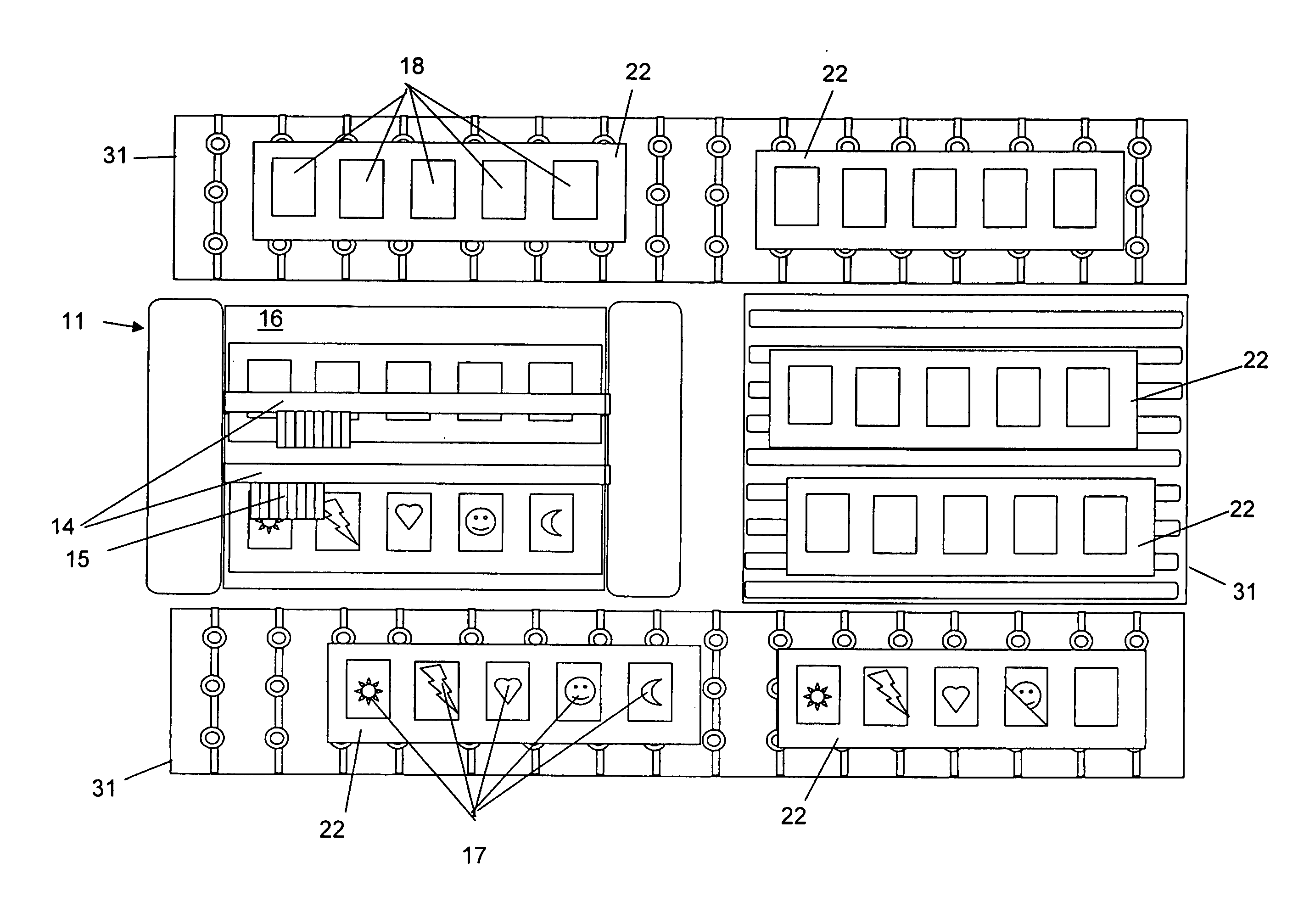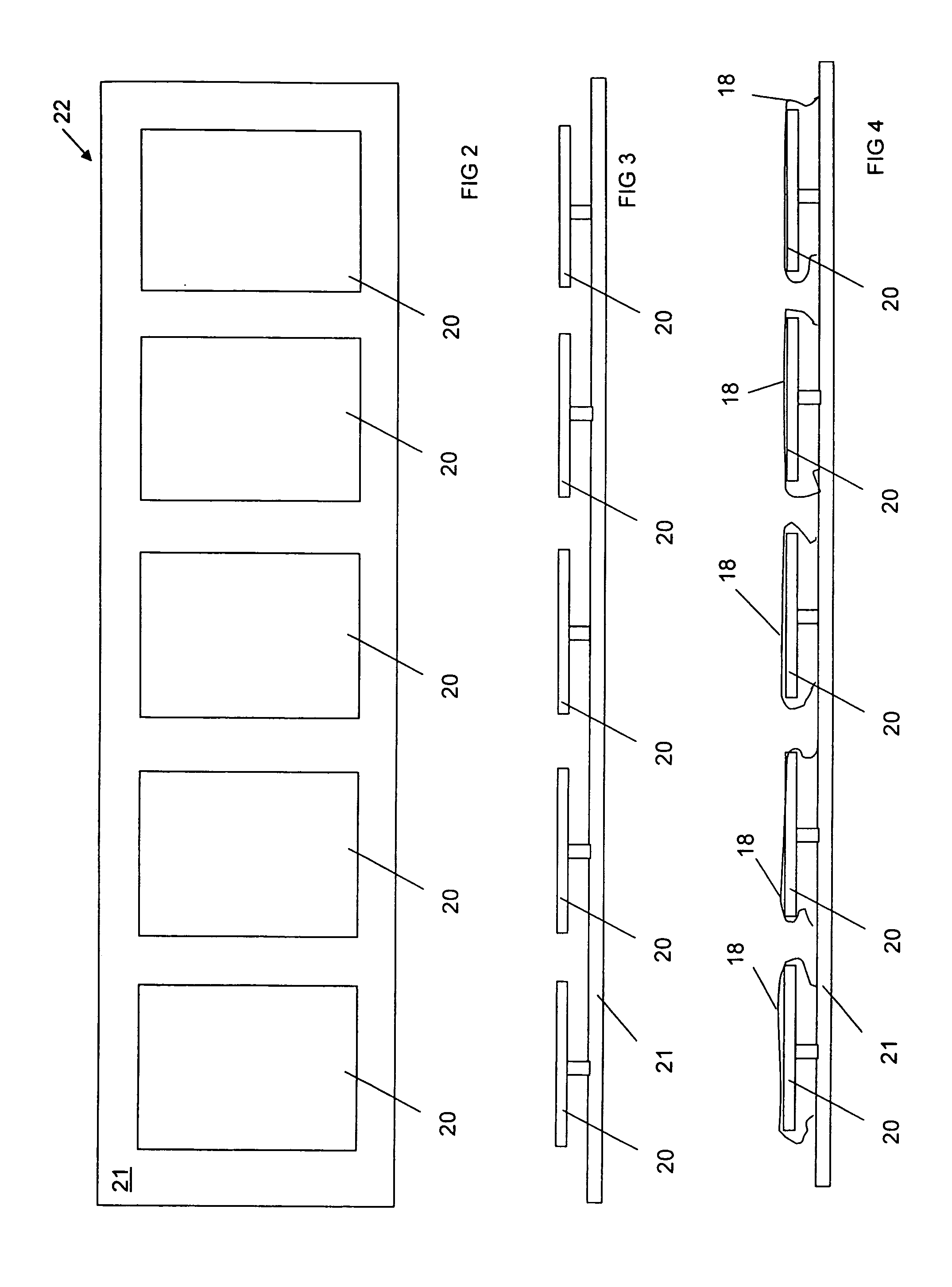High volume inkjet garment printer with heat presses
a heat press and garment printer technology, applied in printing presses, typewriters, printing, etc., can solve the problems of printing only one garment at a time, more time-consuming than desirable, and time-consuming, and achieve the effect of high garment volume and convenient transportation
- Summary
- Abstract
- Description
- Claims
- Application Information
AI Technical Summary
Benefits of technology
Problems solved by technology
Method used
Image
Examples
Embodiment Construction
[0024]FIGS. 1-5 generally show that the apparatus comprises at least one bed 22 for carrying one or more garments or printable substrates and a conveyor system 30, both of which work in cooperation with an inkjet printer 11. The apparatus can be used to print any type of garment, such as shirts, hats, underwear, etc. by loading each garment onto an appropriate attachment device. The apparatus can also be used to print on any color of garment, from white to darker colors such as black.
[0025]FIGS. 2, 3 and 4 show bed 22 in detail. Bed 22 is designed to carry a batch of any type of garment or printable substrate. Bed 22 comprises a tray 21 with garment attachments 20 affixed thereto for holding each garment in position such that the desired print surface of the garment is substantially flat and parallel to a printer's carriage rail. For example, the garment attachment for printing t-shirts is a shirtboard or platen. FIG. 4 shows garment attachment 20 as a platen loaded with a t-shirt ...
PUM
 Login to View More
Login to View More Abstract
Description
Claims
Application Information
 Login to View More
Login to View More - R&D
- Intellectual Property
- Life Sciences
- Materials
- Tech Scout
- Unparalleled Data Quality
- Higher Quality Content
- 60% Fewer Hallucinations
Browse by: Latest US Patents, China's latest patents, Technical Efficacy Thesaurus, Application Domain, Technology Topic, Popular Technical Reports.
© 2025 PatSnap. All rights reserved.Legal|Privacy policy|Modern Slavery Act Transparency Statement|Sitemap|About US| Contact US: help@patsnap.com



